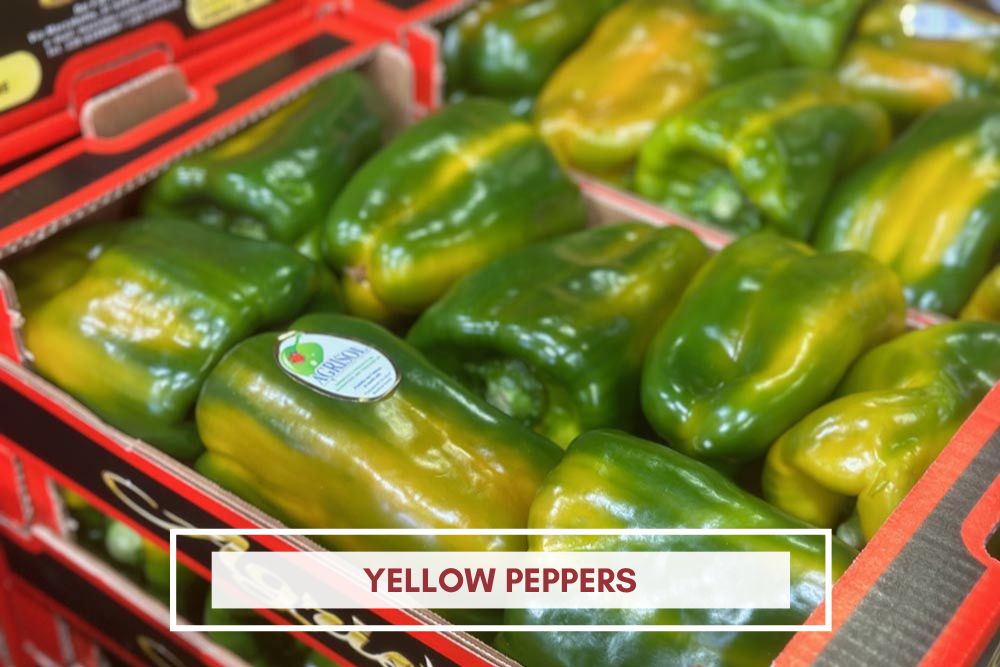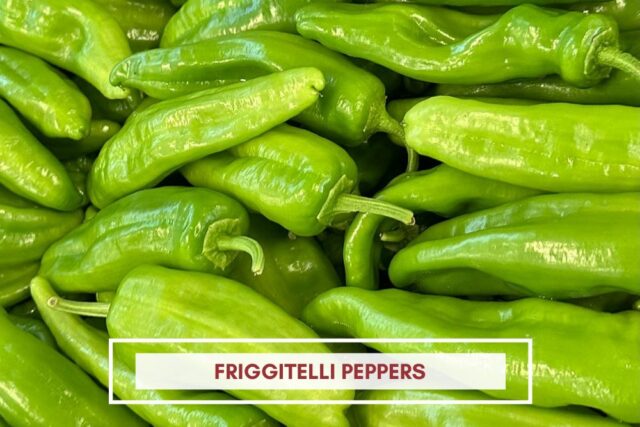- Description
Description
Yellow peppers are a versatile and visually striking ingredient that can enhance the menu of a high-quality European restaurant. Known for their vibrant golden color, mild sweetness, and juicy texture, yellow peppers are an essential component in a variety of dishes. Their ability to add both flavor and aesthetic appeal to culinary creations makes them a favorite among chefs. Here’s how and why yellow peppers can be effectively utilized in fine dining:
Why Choose Yellow Peppers?
Yellow peppers are celebrated for their mellow sweetness, which is less pronounced than red peppers but more flavorful than green peppers. Their bright color adds a cheerful and elegant touch to plate presentation. Rich in vitamins, especially vitamin C, antioxidants, and fiber, yellow peppers are a health-conscious choice. Their versatility allows them to shine in raw, roasted, or blended preparations, making them indispensable in gourmet kitchens.
How to Use Yellow Peppers
- Raw in Salads: Thinly sliced or diced, raw yellow peppers add a crisp texture and a mild, sweet flavor to fresh salads.
- Roasted or Grilled: Roasting or grilling enhances their natural sweetness and imparts a smoky flavor, perfect for pairing with proteins or other vegetables.
- Blended into Sauces or Purees: Yellow peppers can be blended into creamy sauces, soups, or purees, adding a subtle sweetness and vibrant color to dishes.
- Stuffed and Baked: Their hollow shape makes them ideal for stuffing with grains, meats, or cheeses for a hearty and colorful entrée.
- Caramelized: Slow-cooked yellow peppers develop a deep, caramelized sweetness that complements both savory and sweet dishes.
Dishes Featuring Yellow Peppers
- Salads: Incorporate thinly sliced yellow peppers into a mixed greens salad with toasted seeds, avocado, and a citrus vinaigrette for a bright and refreshing starter.
- Roasted Side Dish: Roast yellow peppers with olive oil, rosemary, and garlic, and serve alongside roasted chicken, lamb, or salmon for a sweet and savory pairing.
- Soups and Sauces: Blend roasted yellow peppers into a velvety soup with a touch of smoked paprika, or use them to create a vibrant yellow pepper coulis for fish or seafood dishes.
- Stuffed Peppers: Fill yellow peppers with a mixture of wild rice, herbs, and ground turkey, then bake for a light yet satisfying main course.
- Pasta and Risotto: Incorporate roasted yellow peppers into a creamy risotto with saffron and Parmesan or blend them into a sauce for pasta with grilled vegetables.
- Tapas and Appetizers: Use roasted yellow peppers in antipasti platters, paired with marinated artichokes, olives, and cured meats for a Mediterranean-inspired dish.
- Desserts: Experiment with candied yellow peppers as a topping for creamy desserts like panna cotta or mascarpone mousse, adding a surprising sweet-savory element.
Why Yellow Peppers in Fine Dining?
Yellow peppers bring a balance of flavor, visual appeal, and versatility that makes them an indispensable ingredient for fine dining. Their vibrant golden hue enhances plate presentation, while their subtle sweetness complements a wide range of ingredients and cuisines. Whether used in fresh salads, roasted as a side for meats, or transformed into elegant sauces and purees, yellow peppers add sophistication and creativity to any menu. Their nutritional benefits and adaptability ensure they leave a lasting impression on diners, making them a valuable component of high-quality European restaurant kitchens.




